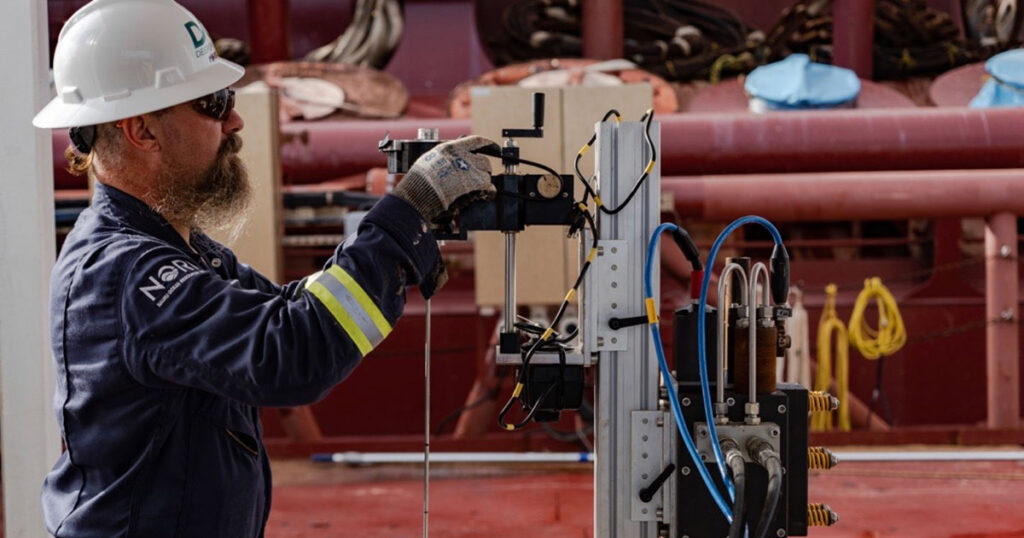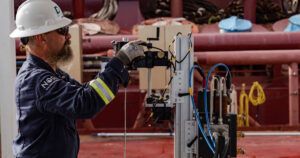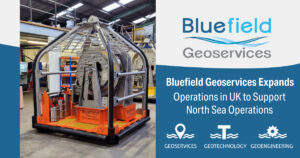This is an exciting time for the subsea survey services industry. Demand for offshore geotechnical expertise is at an all-time high as offshore energy developers seek to expand and diversify their portfolios. Futureproofing the global energy mix calls for a multifaceted approach to offshore exploration, one that prioritizes an increasingly sustainable approach to conventional E&P activities while also embracing the opportunities presented by relatively untapped offshore renewable energy sources, such as wind, wave, tidal, and solar.
This is the so-called energy transition in action—concerted multi-sector efforts to establish greener, more efficient, and ultimately less carbon-intensive ways of leveraging ocean-based resources in the name of staying the course towards net zero ambitions.
The level of resources needed—financial, human, and societal—to effectively plan, construct, and integrate the next generation of towering wind turbines, anchored rigs, power substations, and an infallible network of seabed pipelines and submarine cabling—is often hard to fathom. But fathom, we must.
Enter the offshore geotechnical experts.
Offshore assets are typically subject to far greater environmental lateral loads and less predictable local geohazards than their land-based counterparts. These often-volatile forces can only be understood—and modeled—through rigorous marine scientific study. Furthermore, seabed conditions tend to vary enormously by region, from compacted sands to ultra-high plasticity clays to solid bedrock. This is why subsea geotechnical proficiency, integrated within a multidisciplinary marine survey framework, is so instrumental to the prospecting of new energy frontiers, often in waters where little or no historical data exist.
Setting Quality Data Standards
The quality of available geotechnical data—and therefore analysis—fundamentally hinges on three critical aspects of seabed site investigation: first, the rigorous deployment of innovative technologies engineered to accurately, and with as little disturbance possible, collect sediment samples; second, strict adherence to scientifically-robust soil testing methods; and third, the scrutiny of seasoned subsea subject matter experts (SMEs) with proven worldwide experience.
These are the three pillars around which Bluefield Geoservices was built, in the UK, back in 2018. As true today, the company’s founding mission is to ‘redefine geoscientific frontiers’ by bringing best-in-class, innovation-inspired geoservices, geoengineering, and geotechnologies to market. By disrupting the long-established order of subsea geotechnical service providers, Bluefield’s management team—a select group of geotechnical experts with more than 100 years of combined experience—continues to rewrite the offshore survey playbook.
To do this effectively, the Bluefield approach has always been project-specific, a focus that has helped channel R&D efforts to arrive at practical, fit-for-purpose solutions designed to abate the more persistent operational complexities of seafloor site investigation.
By collaborating with industry partners from the offset, over the last five years, Bluefield has successfully developed and fielded several highly customized and proprietary systems, while also building key third-party license agreements with other subsea tech developers, such as Aretellus. This has culminated in a unique ‘one-stop-shop’ portfolio of cost-effective geotechnical packages primed for the site investigation requirements of subsea structures, offshore platforms, renewable energy infrastructure, pipeline stabilization, mooring systems, and marine mining studies.
GEOTECHNICS SHOWCASE
BOXcone is a specialized in situ testing tool designed to interface with a box core sample box. Designed to meet the requirements of a lightweight unit for use on deck, the BOXcone delivers precision-controlled push force and can be deployed on any box core with a removable box. The system is designed for in situ testing, including CPT, T-bar, ball cone penetrometer, lab vane, and plate load testing, as well as push-in sub-sampling. Other probes can also be supplied, such as thermal conductivity. It is suitable for use in all soils capable of being sampled by a box core system.
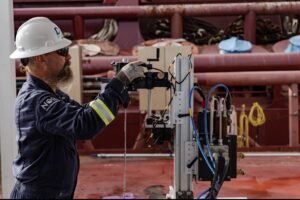
(Image credit: Bluefield Geoservices)
ROVcone, despite being a relatively lightweight unit, delivers 1,000 kg push force for in situ soil testing or sampling and can be deployed in a standalone frame as a crane or an A-frame-deployed, or paired with a Work Class ROV. The ROVcone not only allows for precision positioning, but also the ability to fly the ROV to the next survey point without the need to retrieve the equipment between each test, resulting in significant operational efficiency. The wire-free (acoustic) real-time communications between the penetrometer and the ROV eliminates cabling, reduces snag hazards, and speeds up installation and removal to and from the ROV.
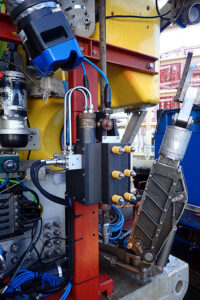
(Image credit: Bluefield Geoservices)
SWORD (Sonic Wireline-Operated Remote Drill) incorporates sonic drilling technology into a seafloor sampling tool. The drill rig is powered by a Sonic-Sample-Drill (SSD) compact roto-sonic drilling drive, and fully integrated with an A.P. van den Berg (APB) in situ CPT testing system and NGI-designed push and piston samplers. Unlike many conventional drilling vessel assets, the SWORD unit is remotely operated and deployed directly on the seabed, hence eliminating any weather or sea state delays. The SWORD can perform testing to a 120-meter penetration depth in ocean depths up to 3,000 meters.

(Image credit: Bluefield Geoservices)
LEVIATHAN is designed to mitigate the risks associated with trenching assignments in both shallow conditions and challenging deeper waters. The trencher system offers 1,600 hp total power in a multitool vehicle with burial tool options of water jetting and chain cutting. The technology is capable of trenching for variable shape and size umbilicals, cables, and pipe.
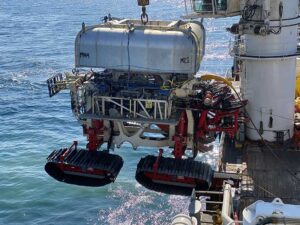
(Image credit: Bluefield Geoservices)
Expanding Horizons
In 2019, Bluefield took the strategic decision to expand into the US market and has since established operations in Rhode Island and Florida, offering teams easy access to the equipment, vessels, and personnel needed to meet the shifting needs of clients operating in US Northeast waters and the Gulf of Mexico.
Having a presence in the US has enabled the company to forge important operational alliances and, in doing so, broaden Bluefield’s service offering to incorporate a suite of complementary marine science specialisms. In particular, Bluefield’s collaborative agreement with CSA Ocean Sciences, a leading provider of marine environmental consultancy with a 50+ year track record of working with offshore energy, coastal infrastructure, and government customers, has helped position the partnership as a highly integrated and streamlined contracting solution for multidisciplinary survey, including geophysical, seafloor, and water column sampling services in both shallow and deep-water environments.
Investments in the US have been matched by the recent news that Bluefield has opened a new state-of-the-art facility near the Port of Blyth, in England, to support growing demand for operators in the North Sea.
This feature appeared in Environment, Coastal, and Offshore (ECO) Magazine’s 2023 Autumn Multidisciplinary Environmental Projects edition, to read more access the magazine here.
